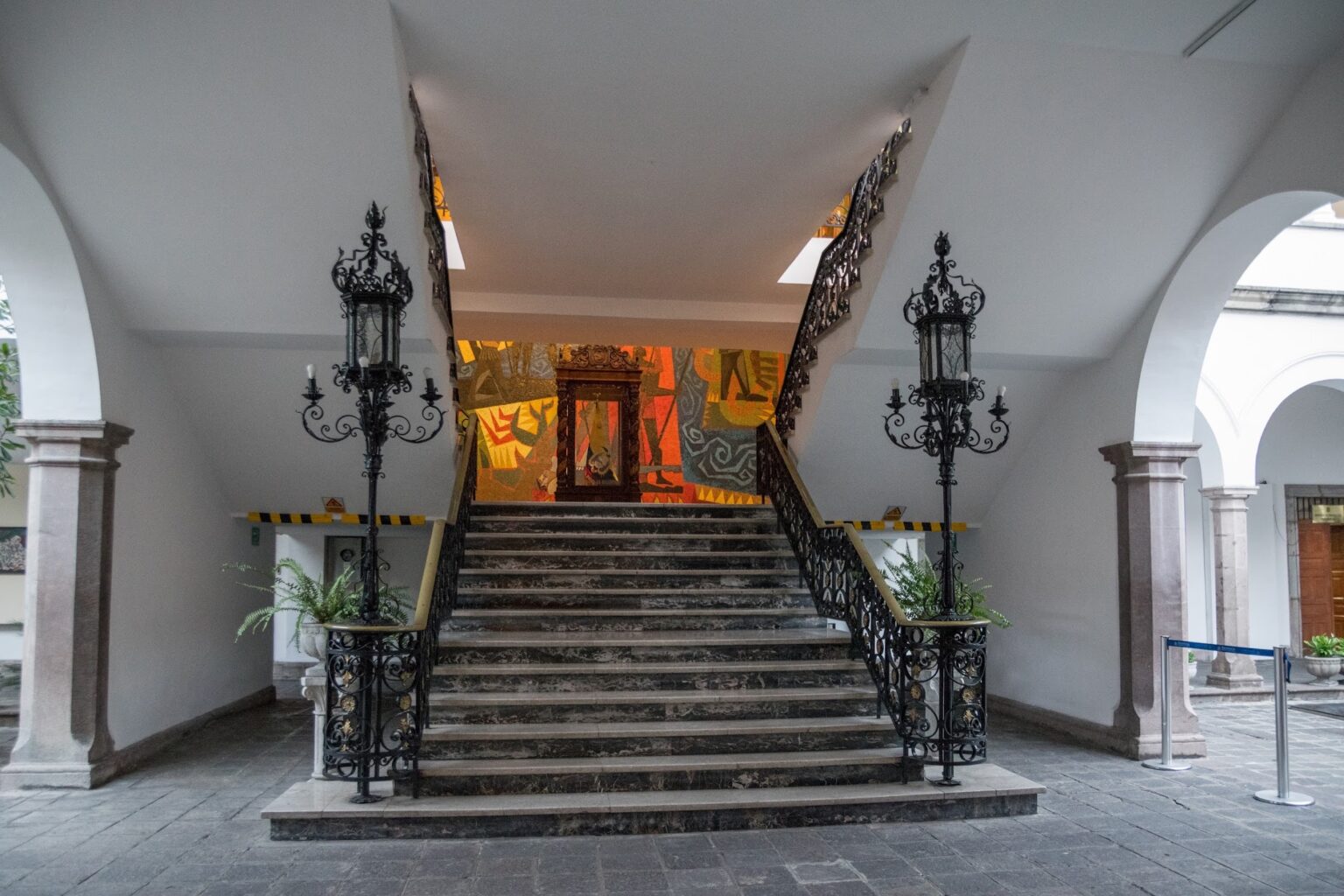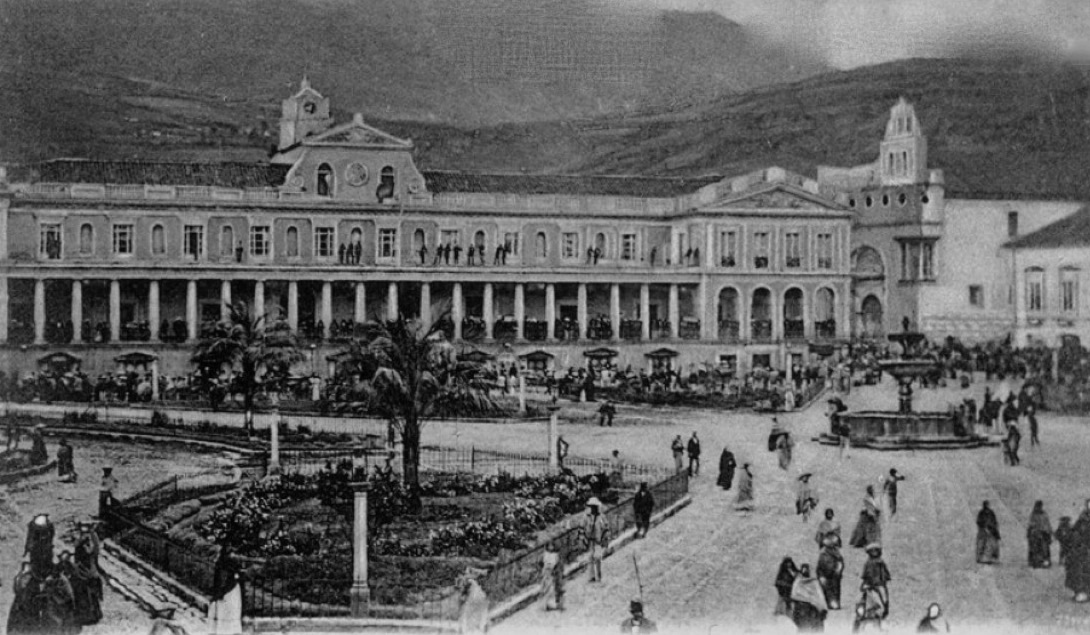Español
El Palacio de Carondelet es la actual sede del Gobierno del Ecuador y residencia presidencial. Se encuentra en el Centro Histórico de Quito, frente a la Plaza Grande, rodeado de edificios históricos como la Catedral Metropolitana, el Palacio Arzobispal y el Palacio Municipal.
Su origen se remonta al siglo XVI, cuando alrededor de 1570 se adquirieron las primeras casas reales para la administración colonial en Quito. Desde entonces ha sido símbolo del poder político y uno de los espacios más representativos de la ciudad.
La primera sede estuvo ubicada cerca del convento de La Merced. En 1611 pasó a funcionar en la Plaza Grande, en un edificio adquirido por la Corona. Tras el terremoto de 1627, fue reconstruido con piedra y ladrillo, lo que marcó el inicio de una estructura más sólida.
Durante el período colonial y republicano, el palacio sufrió múltiples remodelaciones. En el siglo XIX, el presidente Gabriel García Moreno ordenó importantes reformas que definieron gran parte de su aspecto actual, incorporando balcones de hierro forjado y detalles neoclásicos.
Hoy en día, el Palacio de Carondelet combina funciones administrativas y protocolares. Además de ser la residencia presidencial, está abierto al público como museo, donde se exhiben obsequios de Estado, obras de arte y elementos de valor histórico.


English
The Carondelet Palace is the current seat of the Ecuadorian government and presidential residence. It is located in Quito’s Historic Center, facing the Plaza Grande, surrounded by historic buildings such as the Metropolitan Cathedral, the Archbishop’s Palace, and the Municipal Palace.
History
Its origins date back to the 16th century, when the first royal residences were acquired for the colonial administration in Quito around 1570. Since then, it has been a symbol of political power and one of the city’s most representative spaces.
First Royal Residences
The first royal residence was located near the Convent of La Merced. In 1611, it moved to the Plaza Grande, in a building acquired by the Crown. After the 1627 earthquake, it was rebuilt with stone and brick, marking the beginning of a more solid structure.
Transformations
During the colonial and republican periods, the palace underwent multiple renovations. In the 19th century, President Gabriel García Moreno ordered major renovations that defined much of its current appearance, incorporating wrought-iron balconies and neoclassical details.
Present Day
Today, the Carondelet Palace combines administrative and ceremonial functions. In addition to serving as the presidential residence, it is open to the public as a museum, displaying state gifts, works of art, and artifacts of historical value.